Exploring unique kitchen countertop ideas opens up a world of creativity and functionality, allowing homeowners to customize one of the most used surfaces in their kitchen. Countertops not only add a visual appeal to a kitchen but also play a critical role in the workflow of cooking space, impacting durability, ease of cleaning, and aesthetic cohesion with cabinets, backsplashes, and flooring. A unique countertop design can elevate the entire look of a kitchen, making it a focal point while also serving practical needs.
From innovative materials to creative design patterns, countertops today go far beyond traditional granite or laminate surfaces, with options to match every kitchen style, from rustic to ultra-modern. Choosing the right countertop requires careful consideration of both style and functionality and unique countertop ideas offer a way to break out of conventional designs.
Concrete countertops have become popular in recent years, especially among those looking for a unique and customizable option. Concrete can be molded to fit any kitchen layout and dyed or stained in a variety of colors, from neutral grays to earthy browns. For a more personalized touch, aggregates such as glass, shells, or stones can be embedded into the surface, giving the countertop a one-of-a-kind look. Despite its industrial origins, concrete can be polished to a smooth, refined finish that adds elegance to the kitchen. However, concrete does require regular sealing to maintain its look and protect it from stains, and it can be susceptible to cracking if not properly reinforced.
For a truly luxurious and rare countertop material, soapstone offers a unique look that’s both beautiful and functional. Soapstone countertops are known for their dark, rich color and subtle veining, which can add depth and character to a kitchen. Unlike granite or marble, soapstone is non-porous, meaning it doesn’t absorb liquids or stain easily. This makes it a low-maintenance choice for those who prioritize durability and ease of care. Additionally, soapstone can withstand high temperatures, allowing homeowners to place hot pots and pans directly on the surface without fear of damage. While soapstone can be softer than other stones and may develop small scratches, many people appreciate this as part of its natural patina over time.
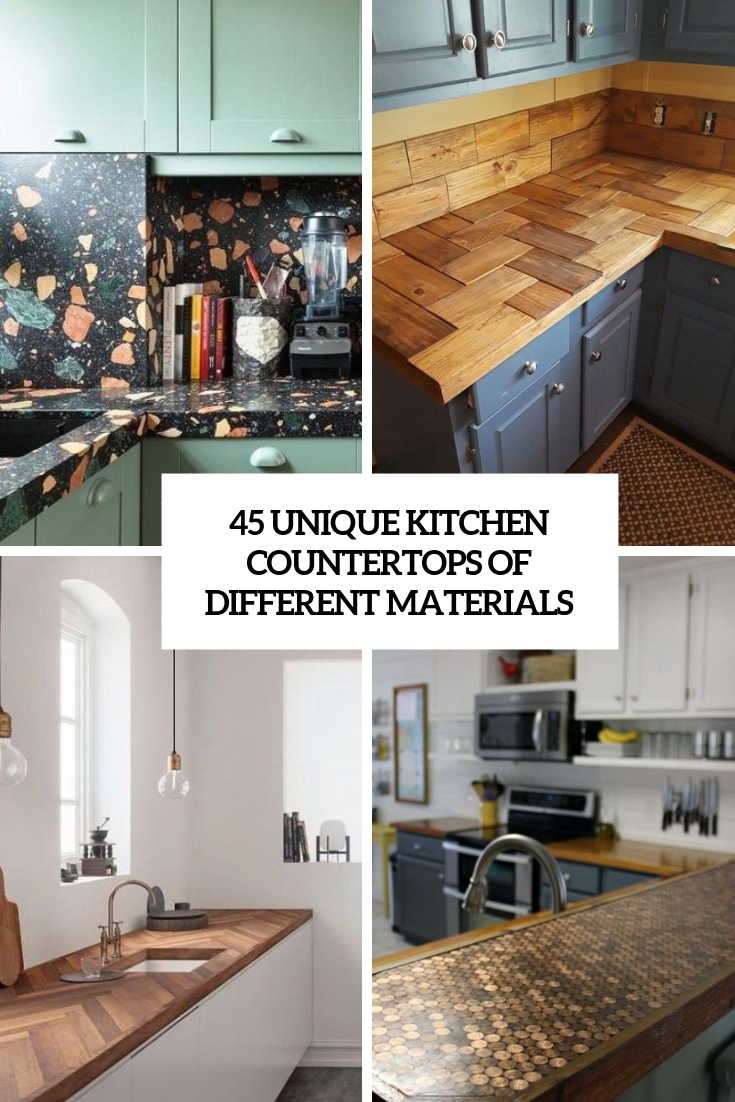
Wood countertops, particularly butcher block, provide a warm and inviting look to any kitchen. With a variety of wood types, from maple and oak to walnut and cherry, butcher block countertops can be tailored to match a kitchen’s specific color scheme and style. Beyond aesthetics, wood is naturally anti-microbial, making it a safe choice for food preparation areas.
While it may require periodic oiling to maintain its finish, this process helps preserve its natural beauty. Wood countertops also have the advantage of being more forgiving to knives and other utensils, making them less likely to dull or damage kitchen tools. However, they are more susceptible to water damage, so care must be taken to avoid prolonged exposure to moisture.
Quartzite is another high-end option that offers a unique blend of strength and beauty. Quartzite should not be confused with quartz, as they are entirely different materials. Natural quartzite countertops feature stunning veining and patterns, often resembling marble but with greater durability. It is highly resistant to scratching, heat, and etching, making it an ideal choice for kitchens with heavy use. Quartzite is available in a wide range of colors, from soft whites and beiges to deep grays and blues, which can complement any kitchen aesthetic. Due to its natural origins, every slab of quartzite is unique, ensuring that your countertop will be one of a kind.
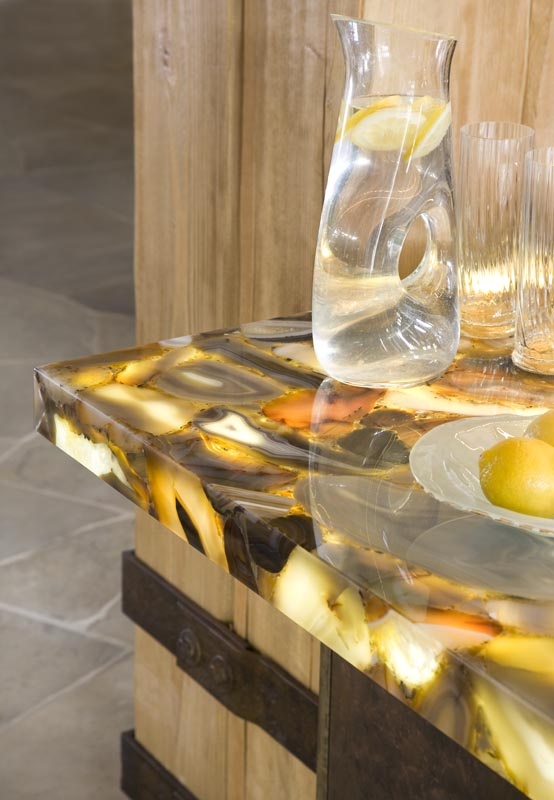
For those interested in eco-friendly options, recycled glass countertops provide a sustainable yet visually striking choice. These countertops are crafted from crushed glass set in a concrete or resin base, resulting in a durable surface with a mosaic-like appearance. The color and composition can vary greatly, depending on the type of glass used, which can range from clear to brightly colored pieces. Recycled glass countertops are resistant to heat and stains, though they may be susceptible to scratching if not properly maintained. Their unique look can add a splash of color and personality to a kitchen, especially in modern or eclectic design schemes.
Marble is a classic choice for those who favor elegance, but there are unique ways to use it to make a statement. Opting for a bold-colored marble, like Calacatta Gold or Nero Marquina, can create a luxurious feel. Marble with prominent veining is another way to make the countertop stand out, as it draws the eye and creates movement within the space.
Although marble requires regular sealing and can etch from acidic substances, many homeowners feel that the material’s timeless beauty justifies the maintenance. If you want the look without the upkeep, consider using marble on a kitchen island rather than the entire counter space, allowing it to be more of a showpiece.
Stainless steel countertops are favored in professional kitchens for their durability and ease of cleaning, but they are also an excellent choice for home kitchens with a modern or industrial aesthetic. Stainless steel is heat-resistant and highly hygienic, as it is non-porous and easy to sanitize. It can also be seamlessly integrated with sinks and backsplashes, creating a streamlined look. However, stainless steel countertops can scratch and may show fingerprints, which might not appeal to everyone. Pairing it with warmer elements like wood or textured backsplashes can help soften its appearance and make it more inviting.
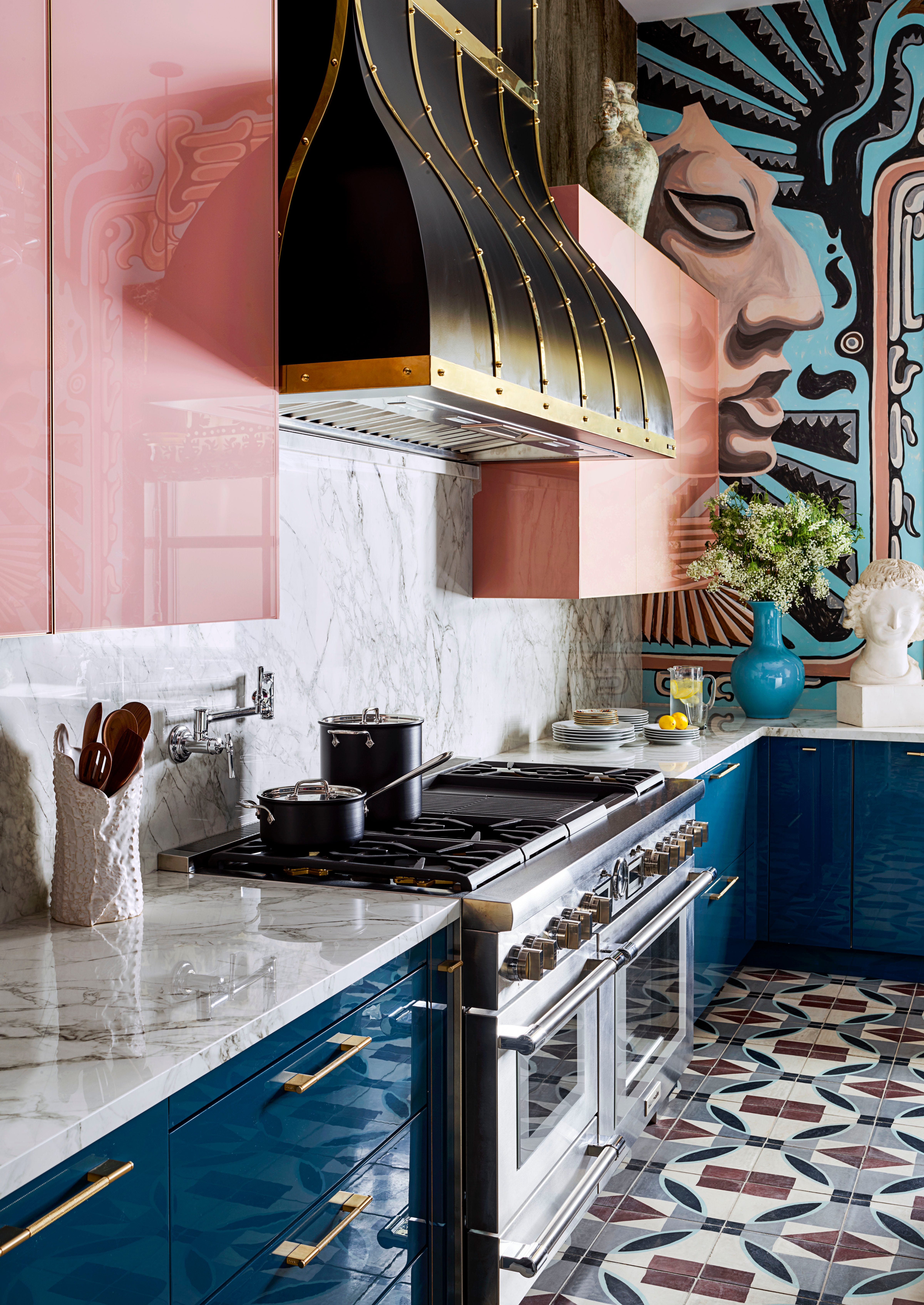
Porcelain countertops are relatively new on the scene but offer impressive benefits. Porcelain is made from kaolinite clay and other minerals, making it incredibly dense and resistant to staining, scratching, and UV light. This makes it ideal for both indoor and outdoor kitchens. Porcelain can also be printed to mimic the appearance of natural stones like marble or granite, giving homeowners the aesthetic they desire without the cost or maintenance. Thin, large-format porcelain slabs are often used for countertops, allowing for sleek, modern designs. However, porcelain is brittle and can chip, so it may not be the best option for a high-traffic kitchen.
A growing trend in unique countertop designs is the use of mixed materials, combining two or more surfaces to create visual interest and functional benefits. For instance, pairing marble with wood can offer the best of both worlds—marble for rolling dough and wood for cutting.
Combining different materials also allows for contrasting colors and textures, creating a more dynamic and personalized kitchen. This approach requires careful planning to ensure that the materials complement each other and that the transitions are seamless, but it can result in a truly unique and versatile countertop.
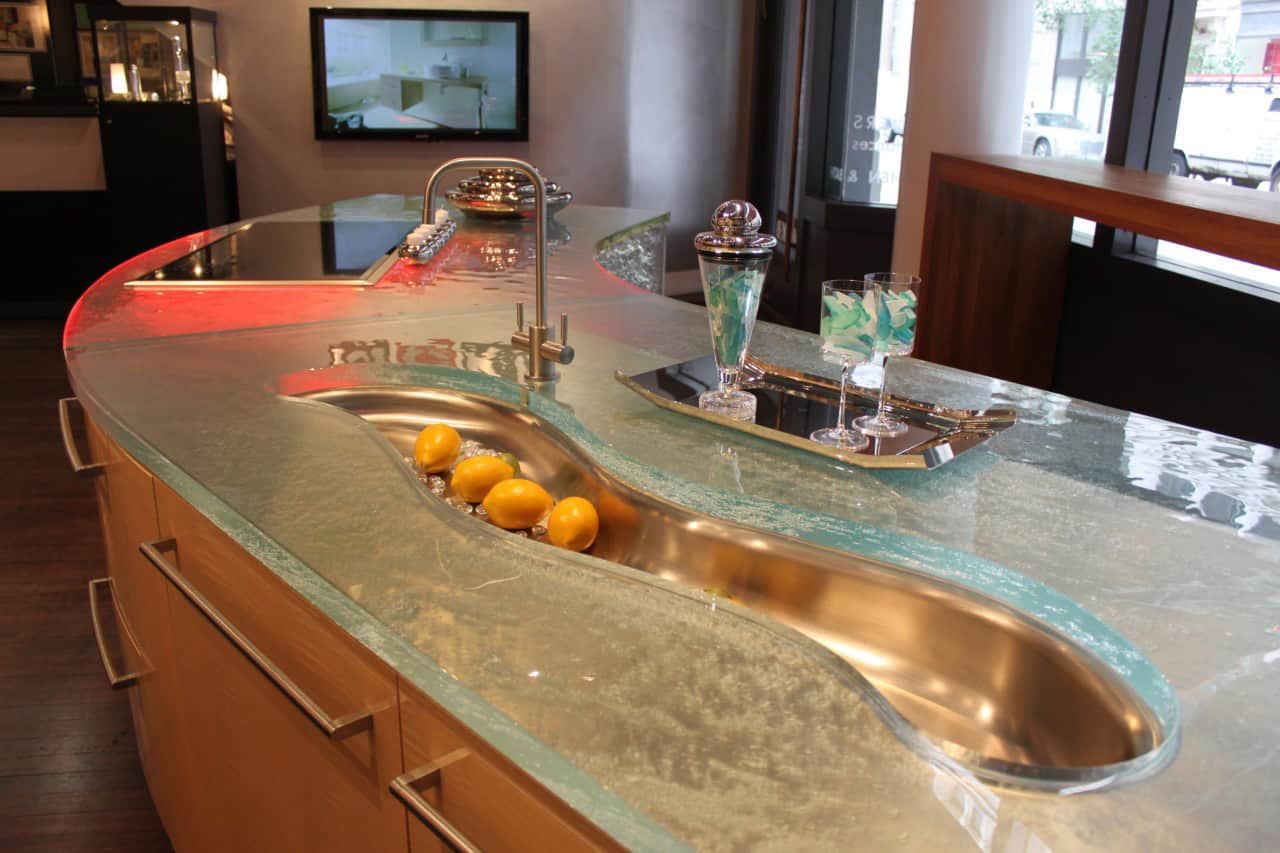
Solid surface countertops, such as Corian, provide another creative avenue for unique countertop design. Solid surfaces are made from acrylic or polyester-based plastics, which are easy to mold and can be customized in almost any color or pattern. This makes them an ideal choice for homeowners looking for a seamless look with integrated sinks or backsplash options. Solid surfaces are non-porous and stain-resistant, which makes them easy to clean. However, they are less resistant to heat and scratches compared to natural stone. They can be a great option for those who prioritize a contemporary look with minimal maintenance.
One of the boldest countertop choices is terrazzo, a composite material consisting of chips of marble, quartz, glass, or other materials set in a cement or resin base. Terrazzo countertops are colorful, unique, and eye-catching, often serving as a statement piece within a kitchen. They are highly durable and resistant to stains and scratches, but they may need periodic sealing to keep their vibrant appearance. The artistic potential of terrazzo is limitless, with options for custom color combinations and patterns that can make a kitchen truly one-of-a-kind.
Copper countertops provide a warm, rustic aesthetic that develops a natural patina over time, adding character to a kitchen. Copper is a naturally antimicrobial material, which is an added benefit for food preparation areas. Over time, copper countertops develop a darker, weathered look that many homeowners find appealing. Copper is also malleable, allowing for unique design elements such as hammered or textured finishes. However, it is a softer metal, so it can dent and scratch more easily than harder surfaces.

For those who enjoy a natural, earthy look, slate countertops can provide a unique alternative to granite or marble. Slate is a durable and non-porous material, resistant to stains and scratches. Its subtle, matte finish makes it an understated yet elegant choice for a kitchen. Slate is available in various shades of gray, green, and even purple, allowing for flexibility in design. It’s also low-maintenance compared to some other stones, requiring only occasional sealing. Slate’s unique texture and muted tones make it a popular choice for those seeking a sophisticated but natural look.
Tile countertops offer endless customization options, allowing homeowners to choose colors, patterns, and textures that best fit their style. From classic subway tiles to intricate mosaics, tile countertops can be designed to match any kitchen decor. They are also relatively affordable and easy to repair, as damaged tiles can be replaced individually. However, tile countertops require regular cleaning, as grout lines can accumulate dirt and stains over time. For a truly unique look, consider mixing and matching different tile shapes or creating a mosaic pattern to make the countertop a focal point.
Another way to add personality to a kitchen is through color, using vibrant hues or unusual color combinations for the countertop. This approach works particularly well with solid surfaces or quartz countertops, which come in a wide range of colors. Bright colors can energize a space, while softer pastels or deep jewel tones can create a more sophisticated look. Choosing an unexpected color can make the countertop stand out as the centerpiece of the kitchen, adding a personal touch that’s both stylish and functional.
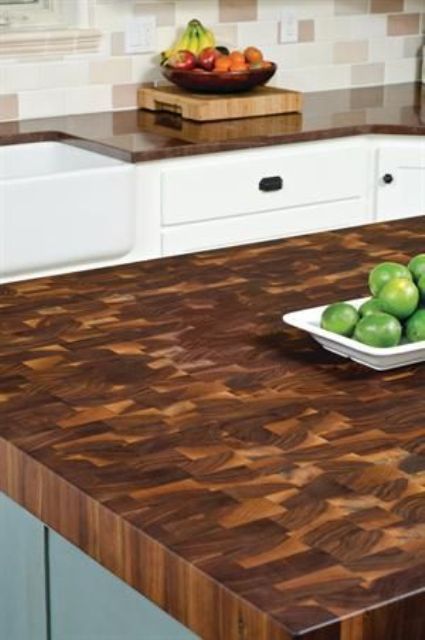
Common Mistakes to Avoid
One of the biggest mistakes homeowners make is choosing a countertop material based solely on appearance without considering functionality. For example, while marble may look beautiful, it requires regular maintenance and is prone to staining, making it a poor choice for those seeking low-maintenance options.
Another common mistake is overlooking the weight of certain materials, like concrete or stone, which may require additional structural support. Budget miscalculations can also be a pitfall; premium materials like quartzite or recycled glass can be more costly than anticipated.
It’s also essential to consider resale value; opting for overly bold or unusual materials could affect the market appeal of your home in the future. Finally, inadequate sealing and poor installation can lead to issues down the line, so working with experienced professionals is crucial.
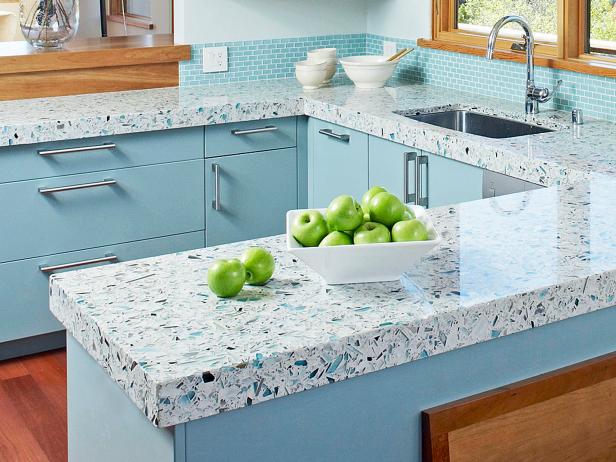
What is the most durable countertop material for a kitchen?
Quartz is often regarded as one of the most durable countertop materials due to its resistance to scratches, stains, and heat. It’s also non-porous, which means it doesn’t require sealing and is easy to clean. Other durable options include granite and quartzite, both of which are resistant to scratching and heat. However, quartzite requires periodic sealing to protect against stains.
Are concrete countertops prone to cracking?
Yes, concrete countertops can crack if not properly reinforced or installed. Small hairline cracks may naturally occur due to changes in temperature or structural shifts in the home. Reinforcing with fiberglass or steel mesh can reduce the risk of cracking, as can regular sealing to prevent water damage. It’s essential to hire a professional experienced in concrete countertop installation to minimize potential issues.
How do I maintain wood countertops?
Wood countertops require regular maintenance to prevent water damage and maintain their finish. Oiling them every few months helps keep the wood hydrated and resistant to drying or cracking. It’s important to clean spills immediately and avoid exposing the wood to excessive water. With proper care, wood countertops can develop a beautiful patina that adds warmth and character to the kitchen.

Can I place hot pots directly on my countertop?
Placing hot pots directly on the countertop is only advisable with heat-resistant materials like granite, quartzite, stainless steel, and soapstone. Other materials, like laminate, wood, or solid surfaces, can scorch, crack, or warp when exposed to high temperatures. Always use trivets or hot pads for materials not designed to withstand heat.
Are recycled glass countertops eco-friendly?
Yes, recycled glass countertops are considered eco-friendly because they reuse glass that would otherwise end up in landfills. The production process also consumes less energy than some traditional countertop materials. However, some recycled glass countertops use a concrete base, which has a higher carbon footprint than alternatives like resin. Still, they are an excellent choice for environmentally conscious homeowners.
What’s the best way to choose a countertop color?
When choosing a countertop color, consider the overall kitchen design, including cabinet colors, flooring, and lighting. Lighter countertops can brighten a space, while darker ones add contrast and depth. For a unique touch, consider a subtle pattern or veining to add visual interest. Make sure to test samples in your kitchen to see how they look in different lighting throughout the day.
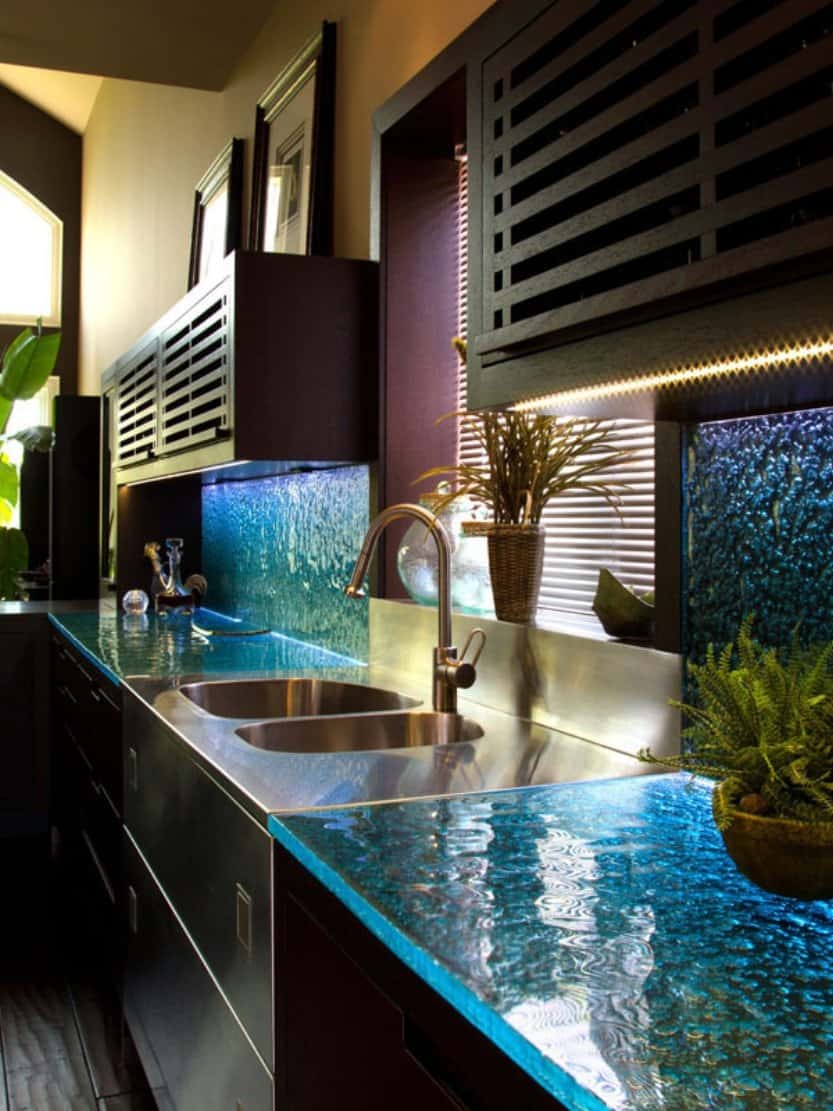
Related articles: